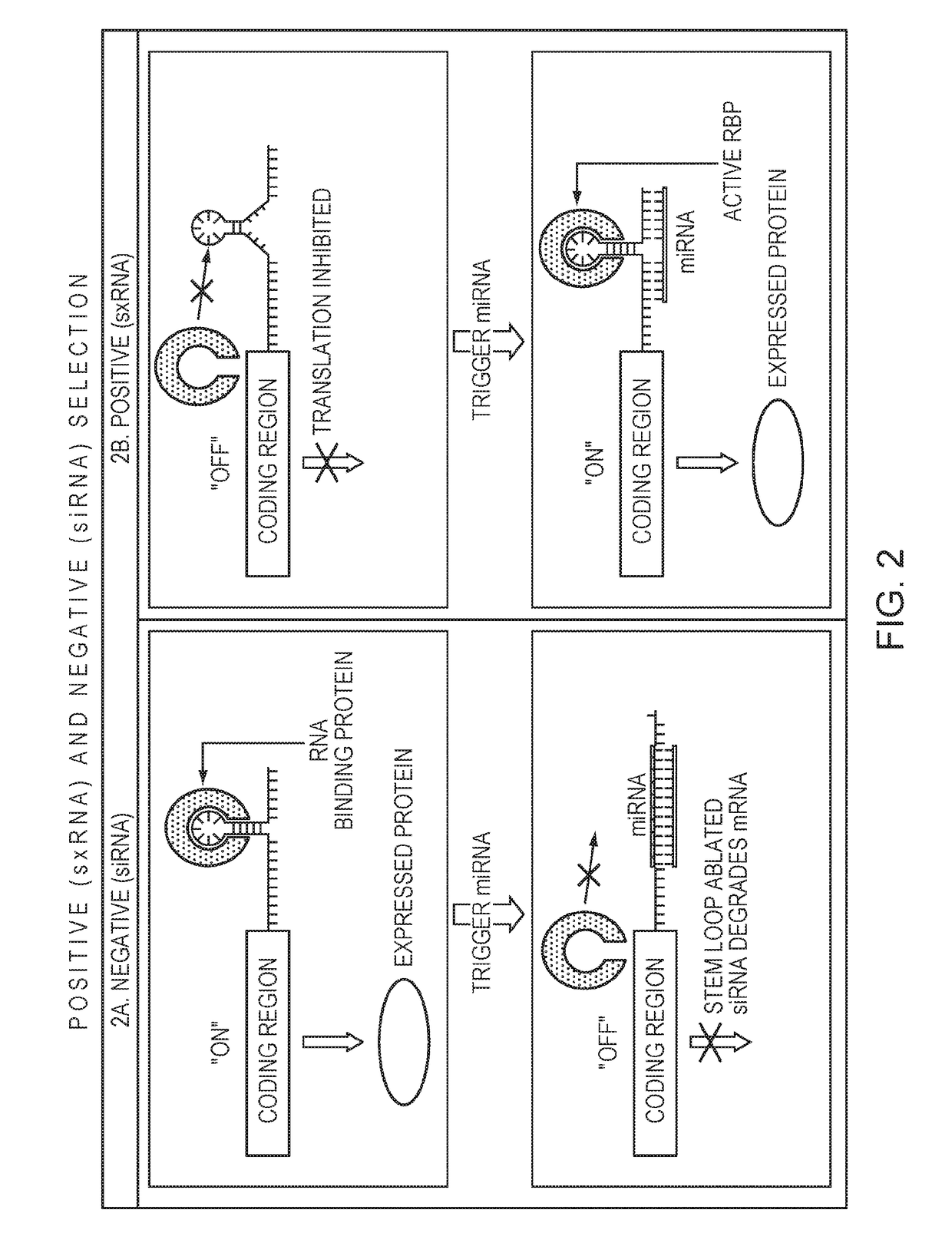Methods and compositions for use of non-coding RNA in cell culturing and selection
a cell culturing and non-coding technology, applied in the field of methods and compositions for using non-coding rna in cell culturing and selection, can solve the problems of reducing the number of cells produced per cell, affecting the survival rate of cells, and affecting the efficiency of current positive section techniques, so as to promote cell survival and/or the amount of goi produced per cell, and promote the translation of selection protein
- Summary
- Abstract
- Description
- Claims
- Application Information
AI Technical Summary
Benefits of technology
Problems solved by technology
Method used
Image
Examples
example 1
[0096]For a negative selection, an miRNA co-expressed with a GOI turns off expression of a transiently transfected mRNA that would otherwise be translated. When the transfected mRNA is a pro-apoptotic or other cell death effector gene, this can result in cells that are not expressing the miRNA to die while keeping the cells with the trigger miRNA and therefore GOI alive (FIG. 2A, FIG. 3).
[0097]In this experiment, a HEK293 cell line was created that stably expresses the BART10 miRNA from an intron in GFP, which was used as an easily measurable surrogate GOI (GFP / BART10+ cells). Cells were classified as stable after 30 days of passaging with no loss or dilution of the GFP signal. BART10 production was verified using qRT-PCR for the miRNA compared to the wild type HEK293s. Plasmids were designed with the ANBax pro-apoptotic protein downstream of a T7 promoter and either one or three copies of a duplex of BART10 siRNA target sites (2 or 6 sites total) in the 3′ UTR of ...
example 2
[0099]In an exemplary positive selection method, BART10 miRNA was used as a non-coding RNA. BART10 miRNA is not predicted to have cross-reactivity with the CHO genome. We designed an HSL-based switch that is predicted to interact with BART10 to form a 3-way junction and placed this sxRNA switch in the 3′ UTR of a luciferase reporter mRNA as shown in FIG. 4. We then nucleofected the in vitro T7 transcribed mRNA into two cell lines (FIG. 5). One was infected with an EBV strain expressing BART10 (HH514-16 cells), while the other was infected with an EBV variant that lacked the BART10 gene (LCL cells). FIG. 5 depicts the resulting expression levels and shows a dramatic and statistically significant change in expression.
PUM
| Property | Measurement | Unit |
|---|---|---|
| Electrical resistance | aaaaa | aaaaa |
Abstract
Description
Claims
Application Information
 Login to View More
Login to View More - R&D
- Intellectual Property
- Life Sciences
- Materials
- Tech Scout
- Unparalleled Data Quality
- Higher Quality Content
- 60% Fewer Hallucinations
Browse by: Latest US Patents, China's latest patents, Technical Efficacy Thesaurus, Application Domain, Technology Topic, Popular Technical Reports.
© 2025 PatSnap. All rights reserved.Legal|Privacy policy|Modern Slavery Act Transparency Statement|Sitemap|About US| Contact US: help@patsnap.com



